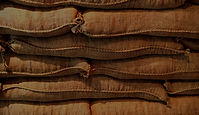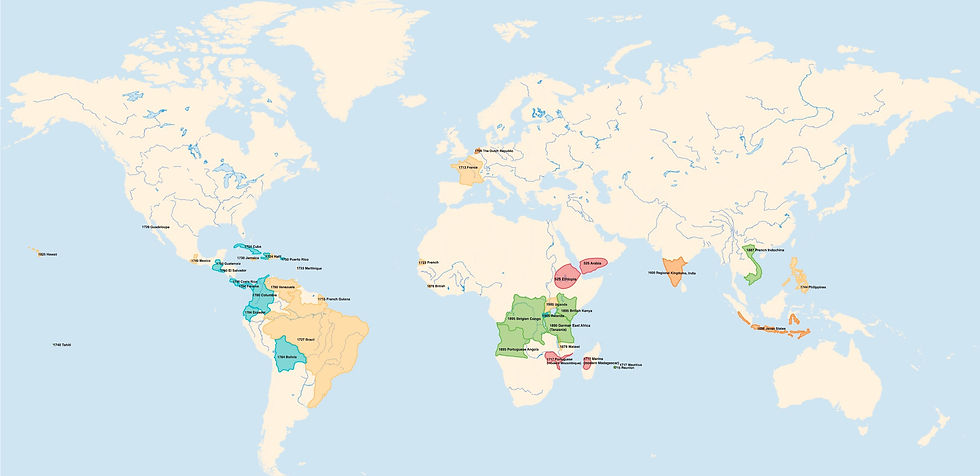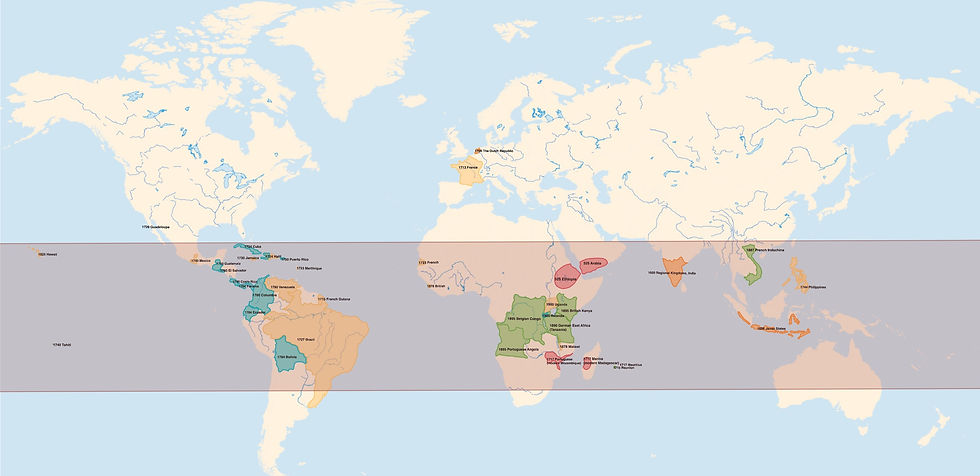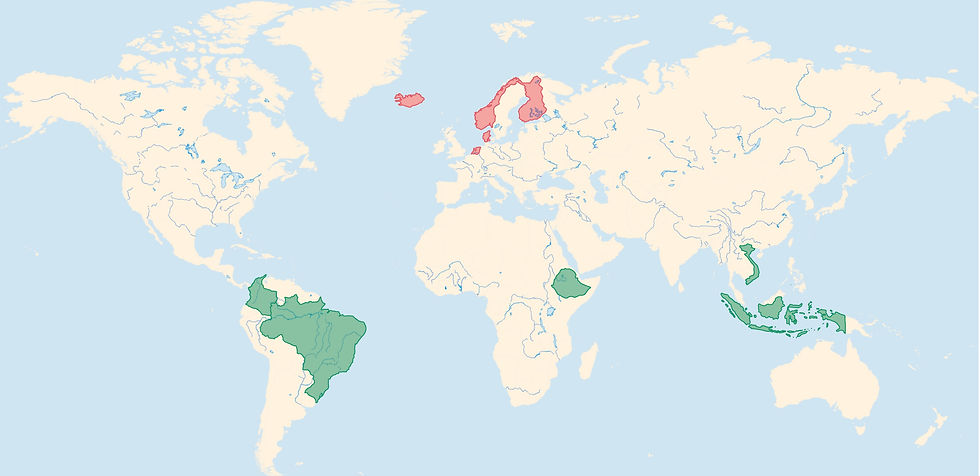Diversify STEM Curriculum Project
Biology 2021: Aleisha Durmaz

coffee
Coffee is one of the most famous examples of a caffeinated beverage, and today is found almost ubiquitously. Discovered by the Oromo people in Ethiopia, it is now the most traded commodity in the world after oil. The most common types are Coffea arabica (arabica) and Coffea canephora (robusta), however I will be mostly focusing on the story of arabica.
Below is the resource around the exchange of information surrounding the coffee plant, followed by the maps illustrated to accompany the document.

This map describes the spread of coffee around the world, with the date written beside each country label. Each country is shaped as it would have been in that year, which is why they do not entirely resemble today’s borders. The colours correspond with the colourful timeline, in order to demonstrate the subsequent genetic diversity of each region

This is the previous map, but with the biogeographical coffee belt highlighted

This map shows the world's top 5 consumers (red) and producers (green) of coffee

This map describes the spread of coffee around the world, with the date written beside each country label. Each country is shaped as it would have been in that year, which is why they do not entirely resemble today’s borders. The colours correspond with the colourful timeline, in order to demonstrate the subsequent genetic diversity of each region

Coffee from Ormo Oral literature
Riddle: Adii dhala; gurraacha hoosisa; diimaa guddifata
[It gives birth to white, lactates black and nurtures red]
Answer: Buna
[Coffee bean, at different stages]
In the first rainy season of spring, the coffee tree blossoms with white flowers. In its second phase, it changes to black coffee beans. Harvest season is indicated by the black coffee beans turning red. Thus, the riddle is in the stages of the coffee bean being compared to the nurturing of a baby.
(Bacha et al.)